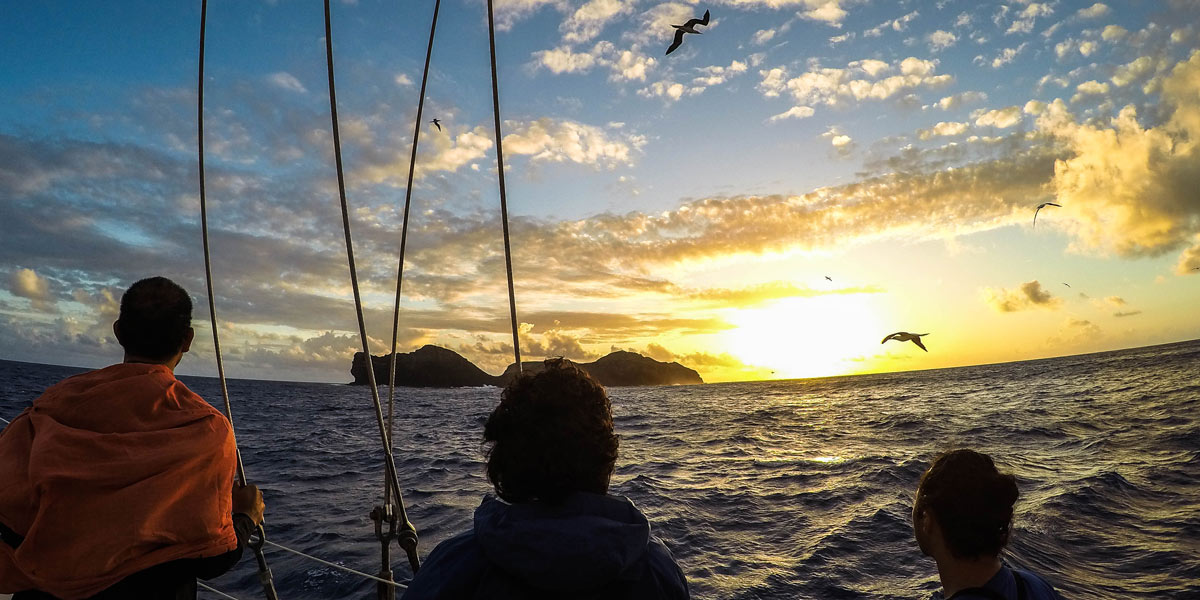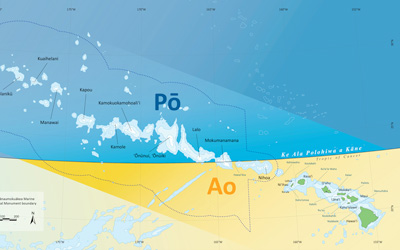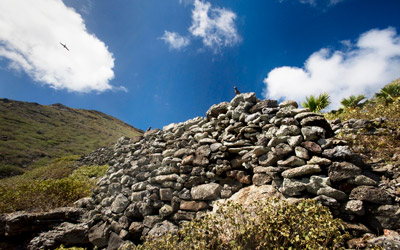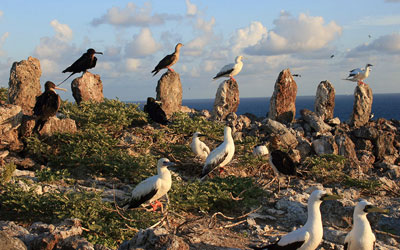Cultural Heritage
Hawaiian Cultural History and Significance

The Pacific Ocean covers one-third of the surface of the earth and comprises thousands of islands that are scattered over a vast expanse of water with shifting winds, and strong currents. The movement of ancestral Oceanic people across remote Oceania was one of the most remarkable feats of open-ocean voyaging and settlement in all of human history. These esteemed expert seafarers navigated throughout this immense ocean by traditional wayfinding relying on the sun, stars, and moon, ocean and weather patterns, seabirds, and other natural phenomenon to expand their voyaging spheres until islands were discovered. Their legacy of exploration, courage, and innovation brought the first Kānaka Maoli (Native Hawaiians) to the Hawaiian Archipelago.

In the Hawaiian archipelago, the northwestern region were the most peripheral islands that relied heavily on interaction and networking between larger islands, such as Kauaʻi and Niʻihau. The Northwestern Hawaiian Islands were explored, colonized, and in some cases permanently settled by Native Hawaiians in pre-contact times. Nihoa and Mokumanamana, the islands that are closest to the larger Hawaiian Islands, have archaeological sites including agricultural, religious, and habitation features. Based on radiocarbon data, it’s been estimated that Nihoa and Mokumanamana could have been inhabited from 1000 A.D. to 1700 A. D. (Ref. 4). These islands pose the same dilemma as a score of other islands in Oceania, which were small targets for voyaging and often at some distance from their nearest occupied neighbor. All of these islands were either empty at contact or abandoned, having been occupied some time previously. Due to the environmental constraints of being small, geographically isolated, and not having enough resources to allow self-sustainability, demographic stability (in initial and later stages of colonization) have been thought to be the main reasons why interaction was so vital to these regions.
The sacred area of Papahānaumokuākea is believed to contain Pō, which according to Hawaiian oral traditions, is an entirely divine source of creation, a primordial realm of darkness from which all life emerged and evolved from, and where ancestral spirits went to after death and were deified into gods. Many of the Northwestern Hawaiian Islands are located in Pō, while Ao is the realm conceived from the emergence of light and consciousness, and associated with the rest of the Hawaiian archipelago from the island of Hawaiʻi to the island of Mokumanamana which is located on Ke Alanui Polohiwa a Kāne (Tropic of Cancer).

The Kumulipo is a Hawaiian creation and genealogical chant that extensively reveals the initial intersection of these two realms,with life emerging from primordial darkness into light describes Pō and Ao. This ancestral repository represents the immense ingenuity of Hawaiians describing the hierarchical succession of life forms born from Pō and emerging into Ao, the realm of light where all living things reside. Among many deeper layers, it starts with the coral polyp, the foundation of the islands, that gave way to the birth of islands, and the multitude of living entities that followed eventually including kanaka (people).

Historically, Hawaiian religious and ritual practices were rooted in landscapes of power. Mokumanamana and Nihoa Islands were the focal points of ritual ceremonies and human occupation in a continuous sequence from ca. A.D. 1400-1815, extending for intermittent periods that continued well in the 19th century. Associated with the traditional expertise of wayfinding, Nihoa is the only island of all the emergent land areas in the region that has evidence of permanent, year-round habitation by Kānaka Maoli. Archaeologists have uncovered man-made agricultural terraces and other artifacts that indicate the existence of permanent communities living on the island until the 1700s.

Situated on the Ke Ala Polohiwa a Kāne (Tropic of Cancer), Mokumanamana is recognized as a ritual center of power and a unique focal point in the archipelago that provided an axis between the worlds of the spirits of the dead (Pō) and the living (Ao). The island contains the highest concentration of heiau (shrines) in the Hawaiian archipelago with upright ahu (altars) that align with heavenly bodies at specific times of the year, such as the equinoxes, winter solstice, and summer solstice. Ancestral oral traditions recorded epic sagas commemorating the remarkable journeys undertaken by deities, aliʻi (chiefs), and kahuna (priests) enduring the extreme conditions as a remarkable expression of their immense mana (power). In recent times, on-going research appears to confirm their significant celestial alignments for navigational purposes and other assertions of the island’s cultural significance to Kānaka Maoli.
The NWHI played an integral role in the social political development of Hawaiian chiefdoms; 2) Hawaiian chiefdoms succeeded in sustaining the long-term use of Nihoa and Mokumanamana as remote satellites; 3) Hawaiian oceanic voyaging expanded simultaneously with the development of terrestrial based economies; and 4) these NWHI represent some of the earliest and most evident forms of religious monumentality and their overall ritual investment matched or was comparable to the ritual complexes in the main Hawaiian Islands.
Today, Papahānaumokuākea continues to be a significant place for Native Hawaiians and their cultural heritage. Papahānaumokuākea, also referred to as the Kūpuna islands (elder islands), represents the living relationship of kanaka ʻōiwi (Native Hawaiians) to these islands as part of the Hawaiian universe and directly connected to knowledge systems and practices central to cultural identity.



